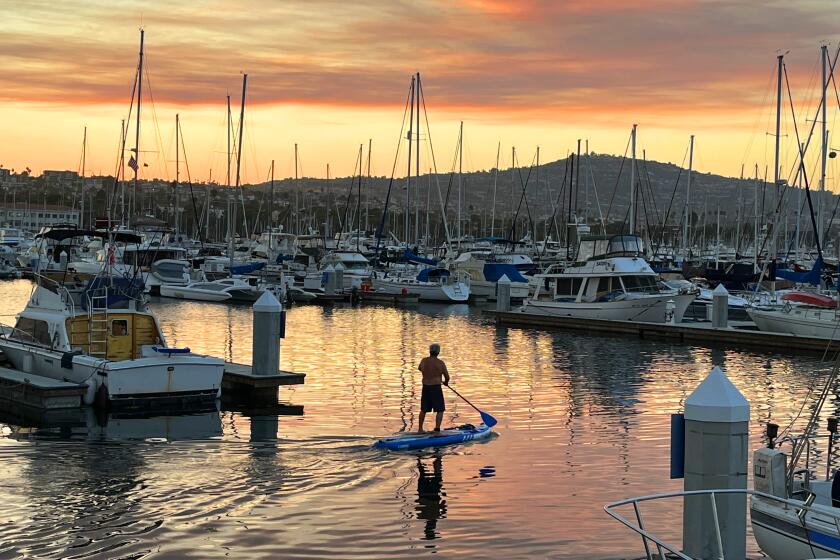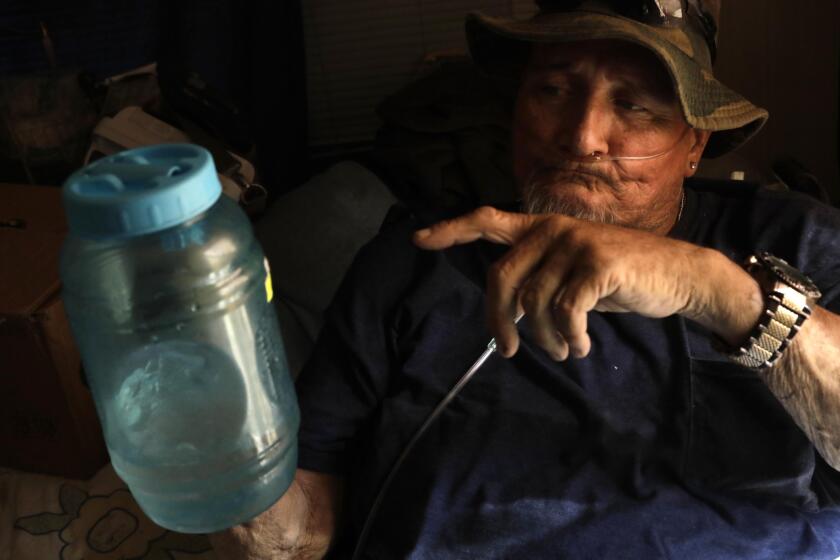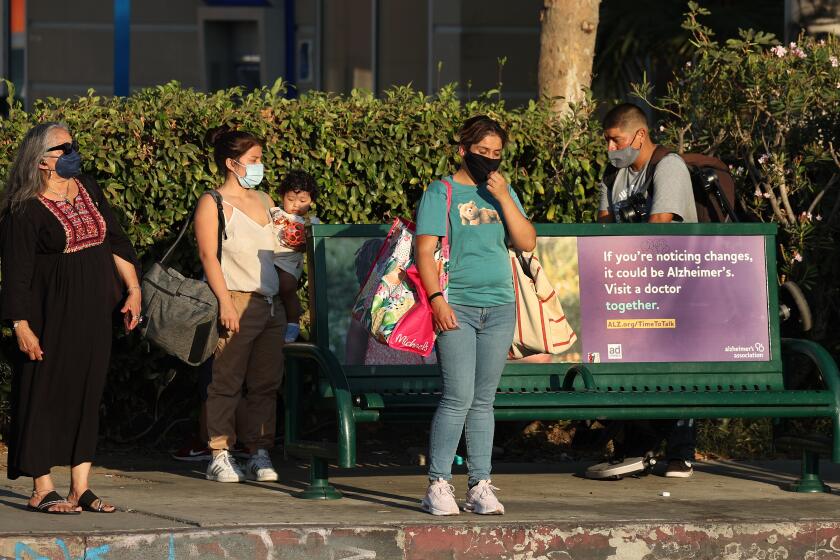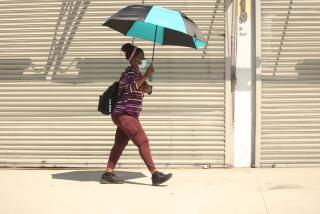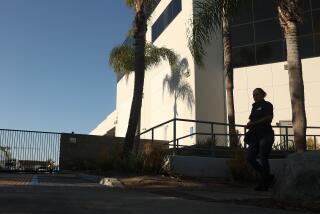Even during record heat, surprisingly few people go to L.A. cooling centers. Why?
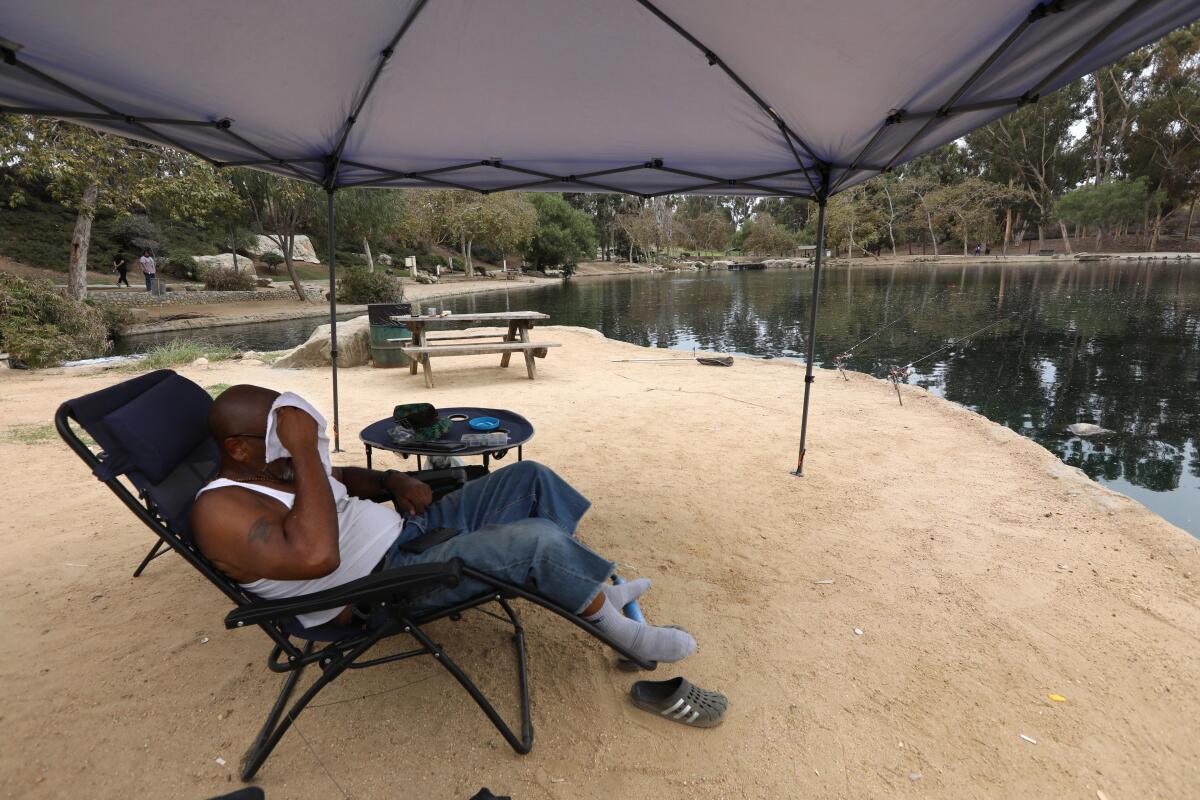
Anthony Willis has been living at a homeless encampment on Vermont Avenue and West 3rd Street near Koreatown for years. During the blistering heat wave last week that brought triple-digit temperatures to portions of Southern California, Willis used a hand fan, a big umbrella and drenched himself with ice to stay cool.
“It’s so hot,” said Willis, 35, on Friday. “I go to the Starbucks and grab ice water every day to keep from dying out here. I’m surprised we have a breeze coming through today — the wind is actually blowing.”
Willis had heard about the cooling centers opened by Los Angeles but hadn’t actually been to one. He said he’d consider going if free transportation or buses were provided to drop him off at a cooling center.
“We don’t have our phones charged all the time or GPS, and most of [the centers] are downtown,” he said. “We don’t really go to them because they’re further from our encampment. We just tough it out where we’re at.”
Forecasters say the Antelope Valley could see temperatures as high as 113 degrees during the ongoing heat wave.
To address the scorching heat, the city opened up nine “augmented” cooling centers — air-conditioned facilities that have expanded hours during heat emergencies — on Aug. 31 to help people get out of the sun. After the National Weather Service warned that the heat wave was expected to last through last week, the city added two more centers and extended the end date for the expanded hours, which was originally supposed to fall on Labor Day, to Sept. 9 at 9 p.m..
But only about 2,256 Angelenos visited the almost dozen cooling centers at recreation and parks centers between Aug. 31 and Sept. 9, according to numbers provided by Joseph Riser, a spokesperson for the city’s Emergency Management Department. With the nine centers open for 10 days, and the two additional open the last week of the heat wave, that breaks down to about 21 visitors per center per day, for a city with almost 4 million residents.
In addition to the recreation and parks centers, more than 70 city public library branches serve as cooling centers during regular business hours. Daily attendance at other centers and libraries aren’t being recorded because those seeking refuge from the heat “likely blend in” with other guests, Riser said, who added that staff members have noticed an uptick in attendees at many of the facilities.
During last year’s heat wave, five augmented cooling centers opened in the city from June 15-20, Riser said. Only about 83 people visited.
A Times investigation published last year revealed that California has severely undercounted the number of people who have died due to extreme heat and has largely failed to provide resources to communities that are most vulnerable to the effects of heat and global warming. As climate change worsens, heat waves are expected to become more frequent and intense.
Read all of our coverage about how California is neglecting the climate threat posed by extreme heat.
On Friday at about 3:30 p.m., four people sat in folding chairs at the Lafayette Recreation Center near Koreatown — one of the augmented cooling centers the city opened for the heat wave. Seven people had visited the center that day, when temperatures in downtown L.A. pushed 100.
Brian Vega, 38, went to the center every weekday last week because his air conditioner was broken during the heat wave, resulting in his apartment heating up to more than 90 degrees at night. Vega said he found out about the cooling centers online and drove from Silver Lake each morning, staying from 11:30 a.m. to about 7 p.m.
“There hasn’t been that many people. I’m surprised,” he said. “[But] I’ve seen a lot of senior people come in, and those are the ones who really need to come in and need to find out about this.”
Vega sat alongside five or six people each day, he said, adding that he doesn’t think most people know about the centers or think they actually work.
“They’d rather be sweating out there — they should come here,” he added.
Javier Moreno, a facility director for the city’s Department of Recreation and Parks, said the number of people fluctuated day to day at the Lafayette facility but peaked the previous weekend, when temperatures reached about 98 degrees in downtown L.A. on Sept. 3.
“We had ups and down, but for the most part, we have a consistent number of people coming in,” he said. “It’s a pleasure for me, especially working for the community here opening our doors to them during these hot times.”
Moreno said one day about 60 people had come in but that attendance started to dwindle. On Thursday, about 10 people showed up.
Homelessness advocates and politicians said that lack of need isn’t the reason why cooling centers aren’t being frequented enough. Rather, they say, there aren’t enough centers or ways for people to get to them.
Andreina Kniss, an organizer for Ktown for All, a homeless outreach and advocacy group, said that for most unhoused people in the city, going to a cooling center simply isn’t feasible.
In Koreatown, a cooling center is located near Liberty Park, which Kniss said is a long trek from the northern part of Koreatown. Because a lot of unhoused people are disabled, Kniss said they aren’t able to easily get themselves to a cooling center without a car or free public transportation.
“While an able-bodied person can make that in 20 minutes, it’s an all-day trek for someone who’s immobile,” she said. “They’d rather stay in a tent and not move and hope to make it through the heat than risk a heat stroke from moving to a location.”
The rules at libraries also deter people from showing up, Kniss said. Because a lot of libraries don’t allow animals inside, she said most unhoused people would choose to remain outdoors rather than abandon their pets. Other community centers will allow animals if they’re brought in with a crate — another barrier for vulnerable populations that can’t afford them.
“There are more than 60,000 unhoused people in Los Angeles County and when you add the number of people who are housed but don’t have air conditioning and need to seek refuge from the heat, simply designating a library as a cooling center doesn’t address that need,” she added.
Kniss recommended the city address heat-related illness and deaths during a heat wave by barring businesses with air conditioning from kicking people out during a heat emergency, utilizing existing infrastructure to help give people rides to the cooling centers, mandating that all apartment buildings have air conditioning units and allowing people to ride the bus with AC for free.
Kniss said she’s had to call 911 for people suffering from heat stroke every summer. On average, five homeless people die in the county a day and during a heat wave, that number rises to about nine a day, she said.
“I’ve never seen this amount of people suffering en masse,” she said. “The sustained heat for this length of time has made it particularly awful. There are a lot of people with co-morbidities, like HIV, cancer and diabetes, that make them particularly vulnerable to the heat.”
Jonathan Parfrey, the executive director of the nonprofit Climate Resolve,called the cooling centers a “salve for people’s conscience” because they are underutilized. He said he almost never sees anyone at Los Angeles’ cooling centers during extreme heat events.
“That is a failed policy in my view,” Parfrey said. He said a much better policy would be to create community-based hubs, such as churches or community clinics, that are known locations that are already trusted, instead of a cold steel chair at a recreation center.
Councilmember Bob Blumenfield, who represents the southwest San Fernando Valley, helped conduct outreach with unhoused people to try to get them to go to a cooling center, but he was met with some resistance.
“I talked to folks who are blistering in the sun and are just trying to hunker down with a little bit of shade and it’s heartbreaking,” he said.
Last week, Blumenfield spoke to an unhoused woman in her 20s who was in a shaded area with a couple of her friends. He gave her a flier informing her about the cooling center at a Canoga Park facility but she chose not to go.
“They were getting high so that’s how they wanted to deal with it,” he said. “She was flushed from the sun and it pained me because I did my best convincing both for her going to a cooling center but also to sign up for housing.”
Blumenfield said the cooling centers aren’t being utilized due to the lack of accessible transportation and not enough open centers. He said that some people also go to unofficial cooling centers with air conditioning, such as a Starbucks or other businesses.
“Part of the issue is that the cooling centers are few and far between, so if it’s not convenient for folks to go there, they’re not gonna go there,” he said. “People don’t necessarily want to go to an area with a lot of folks they don’t know. They want to be in their private setting or somewhere they can blend in.”
Blumenfield hopes more local cooling centers will open and that libraries and recreation and parks centers will have permanent extended hours to accommodate people trying to get out of the heat.
He also thinks cooling centers should be opened on a regional basis. Because he represents the hottest part of the city, where it could get up to 30 degrees warmer than other areas, he said his region might need the centers more often than others.
“The West Valley could have blistering temperatures and it may not affect the rest of the city enough for the mayor to declare a heat emergency and open up the cooling centers,” he added.
Thousands of Metro bus stops have no shelter or even a seat. But a proposal to bring new shelters to Los Angeles with digital ads is raising doubts.
While libraries don’t cost any additional money to function as a cooling center, it costs about $292.79 an hour to operate a cooling center at a recreation and parks facility in the city, according to a July 2022 report from the city’s Emergency Management Department.
The county also operates about 159 cooling centers, but according to a statement from the Los Angeles County Office of Emergency Management, officials don’t keep totals for daily visitors at their facilities.
“Many locations that function as a cooling center operate during normal business hours providing their primary services to the public,” according to the statement. “As such it is difficult to make a distinction who is at that facility/location for the purposes of obtaining services (i.e. checking out a book at a Public Library; recreating at a park or pool) or finding relief from the heat.”
Associate Director of the L.A. County Office of Emergency Management Emily Montanez declined to comment on which cooling centers in the county see the most foot traffic.
“There are any number of scenarios that could be drawn up to paint a picture of spikes and attempt to explain one over another,” she added.
Willis, who is in the process of trying to get housing, said it’s all a matter of making the cooling centers more known and accessible.
“It’s just knowing the addresses and getting the motivation to get there,” he said.
Times staff writer Grace Toohey contributed to this report.
More to Read
Sign up for Essential California
The most important California stories and recommendations in your inbox every morning.
You may occasionally receive promotional content from the Los Angeles Times.
